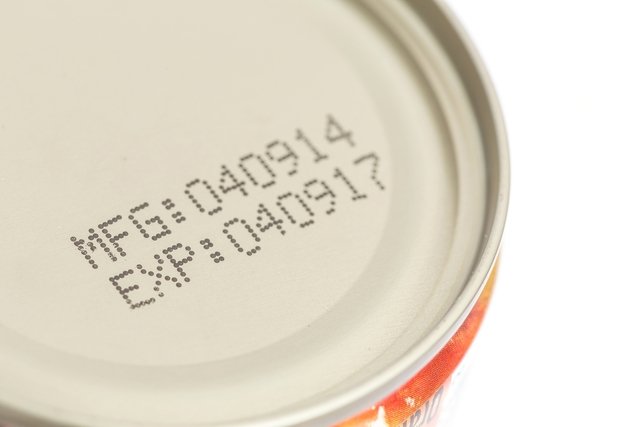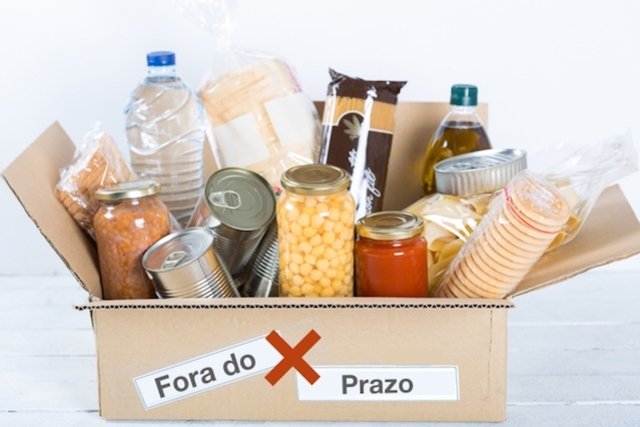The expiration date corresponds to the period given by the manufacturer in which the food, under ideal storage conditions, is viable for consumption, that is, it does not present nutritional changes nor does it favor the development of microorganisms, with no risk of disease.
Although some foods are considered safe to consume even when out of date, such as seasonings, pasta and rice, for example, others, even if they do not present changes in their texture, smell, color or flavor, can be dangerous to health. This is because some microorganisms present in food can proliferate without causing any noticeable change and interfering with the quality of the food, putting the person’s health at risk. Therefore, the consumption of food beyond its expiration date is considered a public health problem, as food intake is often conditioned by visual and/or perceptual characteristics, resulting in illnesses.
For food to be considered safe for consumption, including that which is within its expiration date, it is important that it is stored correctly in accordance with the manufacturer’s recommendations, which are normally described on the label. Lack of adequate storage favors the development of microorganisms that can cause disease.

How to know if a food can be consumed
To consume a food safely, it is important to pay attention to the expiration date indicated on the label, as well as its storage conditions and some characteristics that may be indicative of the growth of pathogenic microorganisms. Thus, the main characteristics to be observed are:
- Cor: Observe carefully whether the color of the food is as expected or whether it has changed. A good example is packaged meat, which when it starts to rot undergoes small changes in color, starting to turn greenish;
- Smell: The second step is to identify whether or not the food can be consumed through its smell, which can indicate whether the food is sour, spoiled or rotten, for example. A great example is soup, which has a sour smell when it starts to rot;
- Texture: The texture also helps to identify whether or not a food is good to consume, as if it changes or has a frizzy, grainy or thick appearance, this may indicate that the food is spoiled. A good example of this is cream, which when spoiled becomes curdled and its texture is no longer homogeneous;
- Flavor: is the last characteristic to be evaluated, as it can put the person’s health at risk. This characteristic is typically only evaluated when other characteristics appear normal. In this case, it is recommended to taste a small amount of the food before consuming it in its entirety or using it for cooking.
Expiry dates are established by the manufacturer through various tests carried out to evaluate the potential for microbial growth in food under different storage conditions. It is important to pay attention to the expiration date of food, because even if no changes in the characteristics of the food are identified, some microorganisms may have proliferated or produced toxins that can result in food poisoning. Know how to identify the symptoms of food poisoning.
Can I eat any expired food?
Although the expiration date is an important indication for checking the quality of the food, some can be consumed even after the expiration date. This is due to the fact that their storage conditions are not so demanding and because they tolerate large temperature variations.
Some of the foods that can be consumed after the expiration date without putting your health at risk are dried pasta and rice, flour, salt, sugar, spices, water and frozen vegetables, for example. These foods can generally be consumed a few months after their expiration date has passed, as long as there are no changes in their color, smell, texture or flavor. Furthermore, their packaging must also be sealed and stored in accordance with the instructions given by the manufacturer.
Refrigerated foods such as meat, yogurt, milk, cream, condensed milk and cream cheese, for example, are examples of products that should not be consumed after their expiration date and their characteristics must be evaluated even when within the expiration date. Furthermore, medicines and supplements are also examples of exceptions that should only be used when within their expiration date, as they may pose a danger to health.
Bibliography
- THE BOARD OF REAGENTS OF THE UNIVERSITY OF NEBRASKA . Food Storage. 2007. Available at: <http://extensionpublications.unl.edu/assets/pdf/ec446.pdf>. Accessed on 12 December 2019
- SANTOS, Kátia M. O et al. Consumer perception regarding the validity of food products. Environmental Health Minutes – ASA. Vol 03. 2 ed; 66-73, 2015
- BVS. Food care. Available at: <http://bvsms.saude.gov.br/bvs/publicacoes/cuidado_alimentos.pdf>. Accessed on 12 December 2019

Sign up for our newsletter and stay up to date with exclusive news
that can transform your routine!
Warning: Undefined array key "title" in /home/storelat/public_html/wp-content/plugins/link-whisper-premium/templates/frontend/related-posts.php on line 12
Warning: Undefined array key "title_tag" in /home/storelat/public_html/wp-content/plugins/link-whisper-premium/templates/frontend/related-posts.php on line 13




